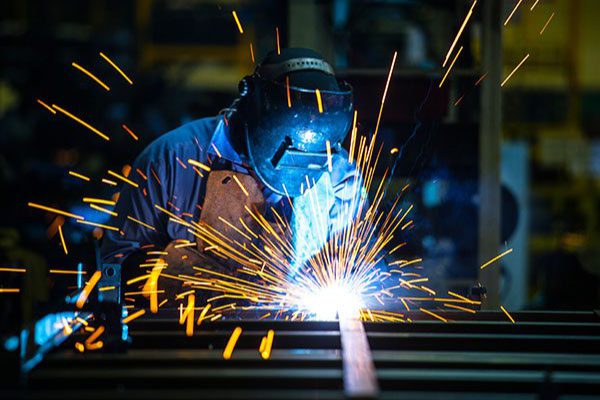MIG, or Metal Inert Gas, welding uses a welding gun that feeds both wire and gas through a welding gun without the need for manually feeding the wire. When you think of welding and imagine sparks flying, you’re probably thinking of MIG welding. This arc-welding process is often easier and faster than TIG welding, and, often times, it does not require as much expertise. However, our welders have perfected their MIG welding skills down to a science, creating industrial and architectural metal fabrications that are high-strength and low-cost.

MIG welding is used with a range of metals and alloys, including carbon steel, stainless steel, copper, aluminum, bronze and nickel. It can be used on a variety of material thicknesses, ranging from thin sheet metals to thick structural metals.
Some of the most common examples of where MIG welding is used include the following:
Metal inert gas (MIG) welding, also known as gas metal arc welding (GMAW), is a semi-automatic arc welding process that uses a continuous solid wire electrode as both the filler material and the electrode. The wire electrode is fed through a welding gun and an electric arc is created between the wire and the base metal. The arc melts the wire and the base metal, forming a weld pool. A shielding gas is used to protect the weld pool from atmospheric contamination.
MIG welding is a versatile process that can be used to weld a wide variety of metals, including steel, aluminum, and stainless steel. It is often used for welding heavier metals, particularly steel, because it is a fast and efficient process.
This means that the voltage between the wire electrode and the base metal remains constant, regardless of the distance between the two. This makes it easier for the welder to maintain a consistent weld.
EP polarity is typically used for welding steel and stainless steel, while EN polarity is typically used for welding aluminum.
The argon protects the weld pool from oxygen, while the carbon dioxide helps to stabilize the arc.
This means that the wire electrode makes and breaks contact with the base metal many times per second. This creates a spattering effect, but it also helps to produce a smooth weld.
It is a versatile, fast, and easy-to-use process that can be used to weld a wide variety of metals.